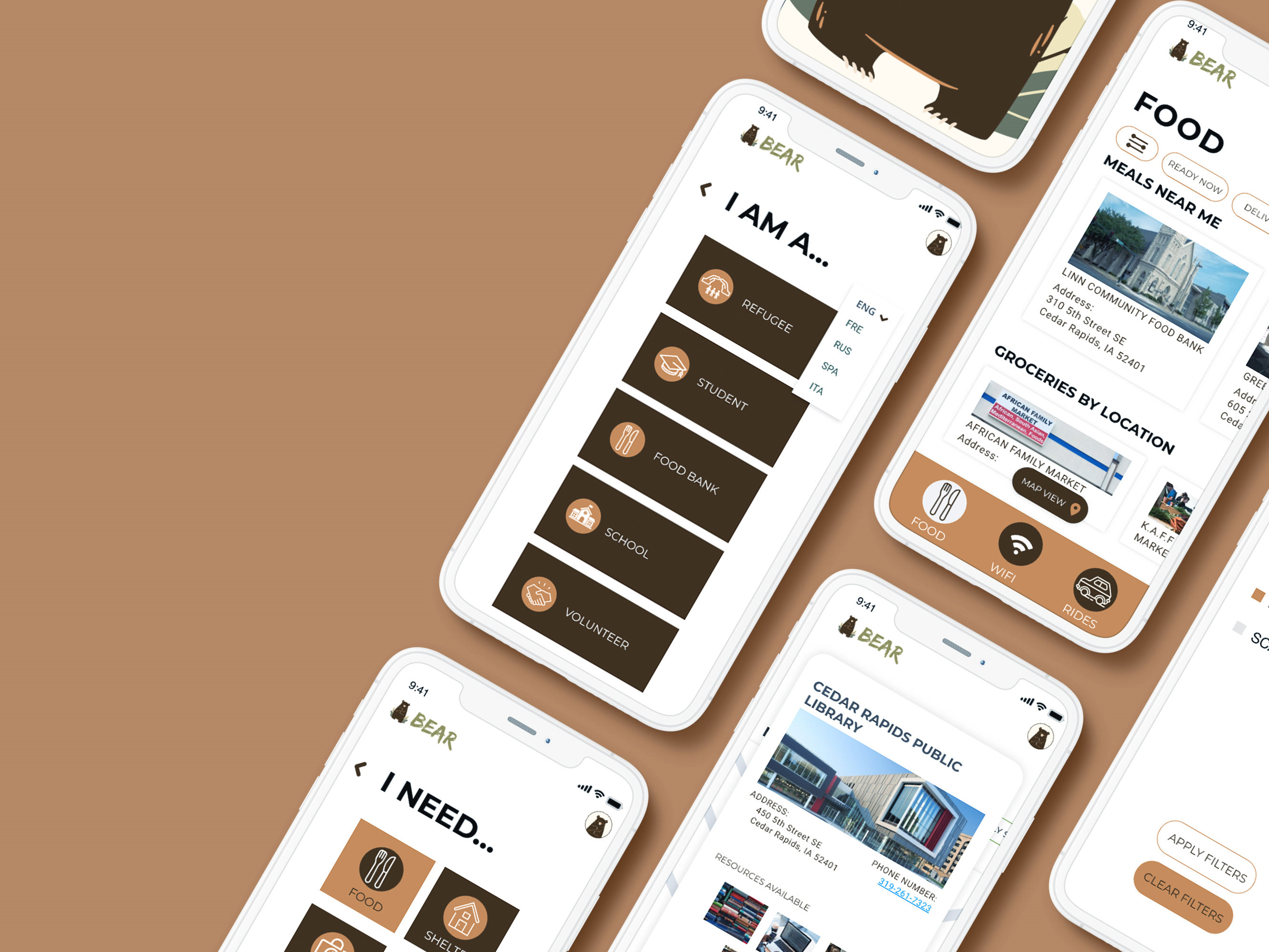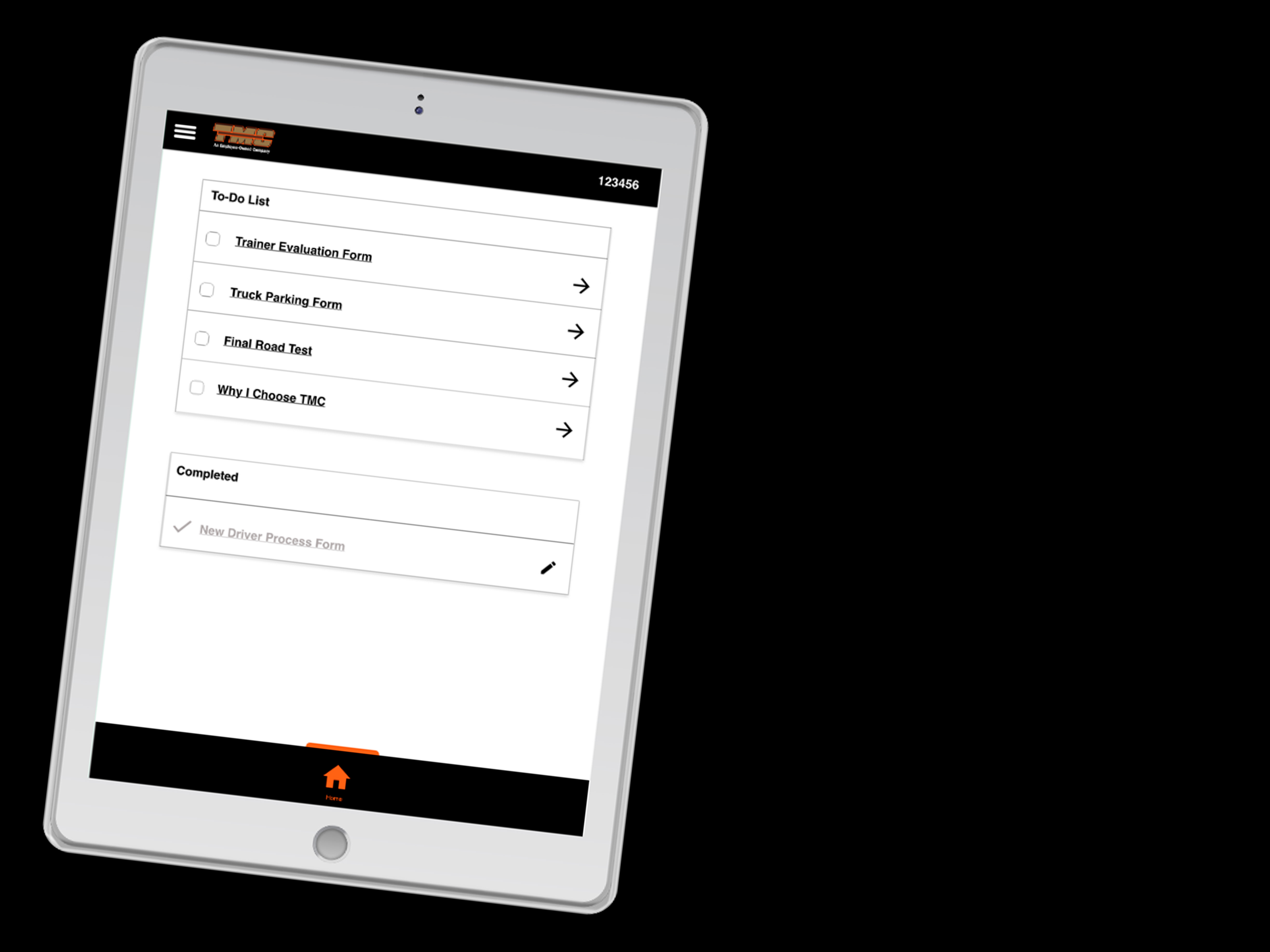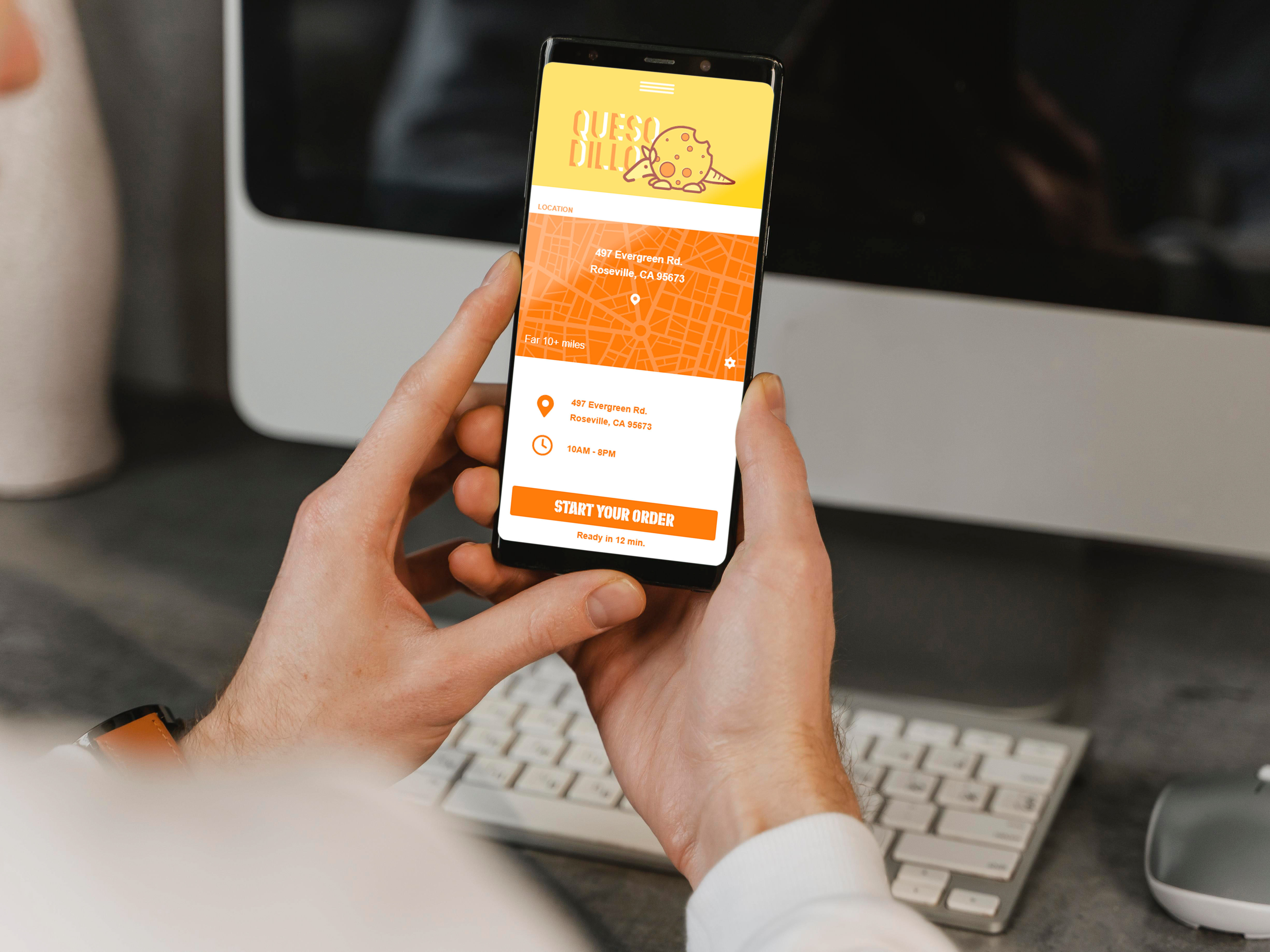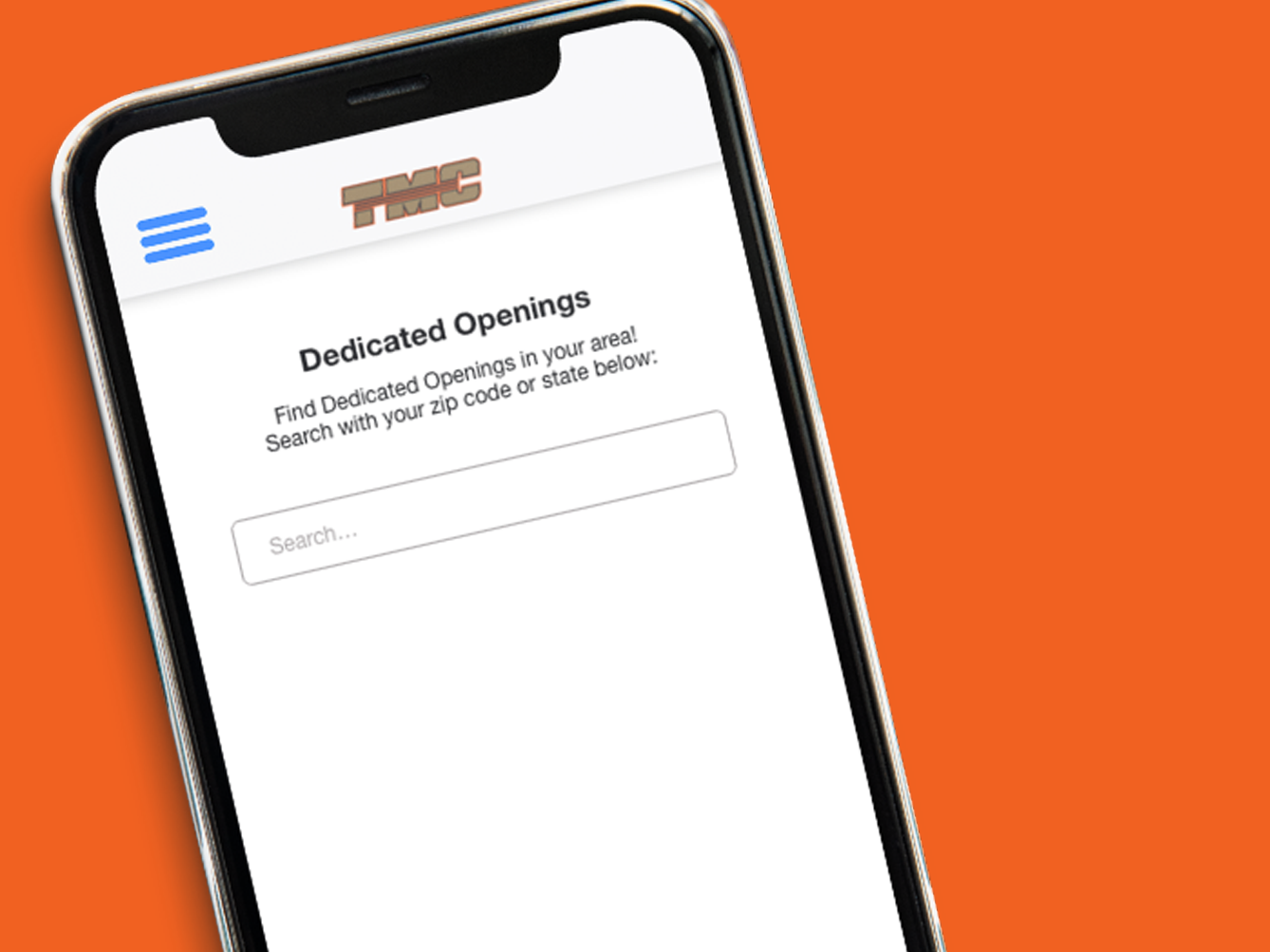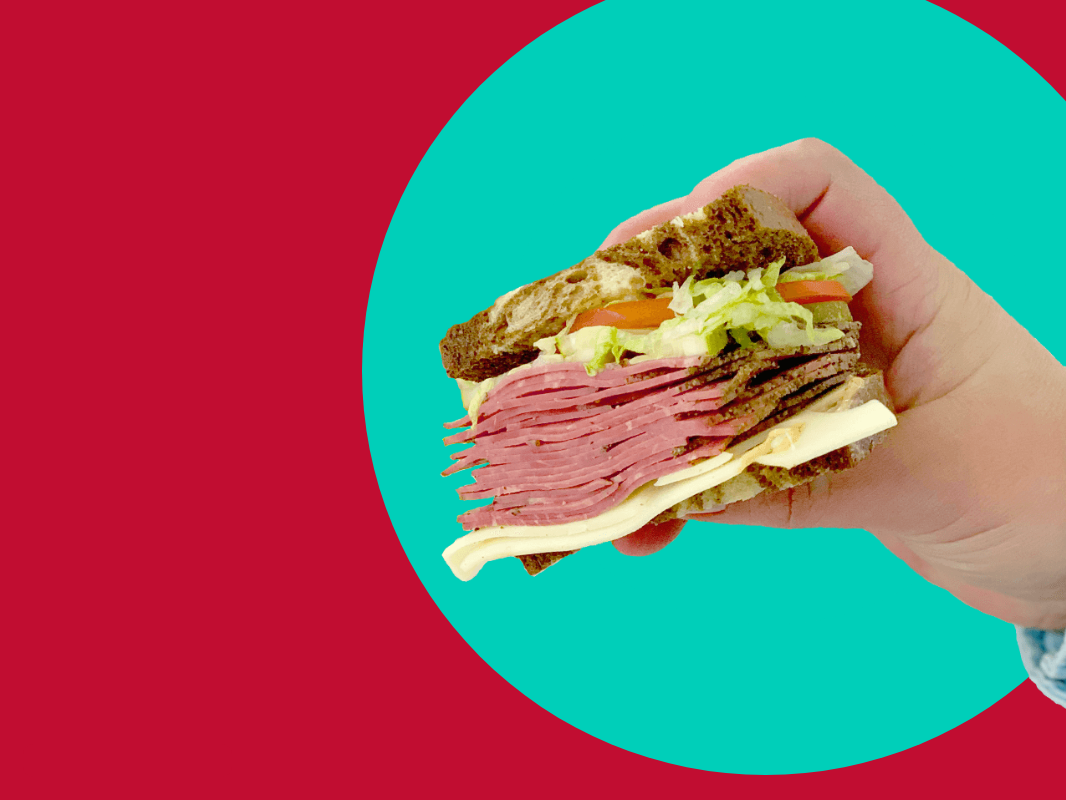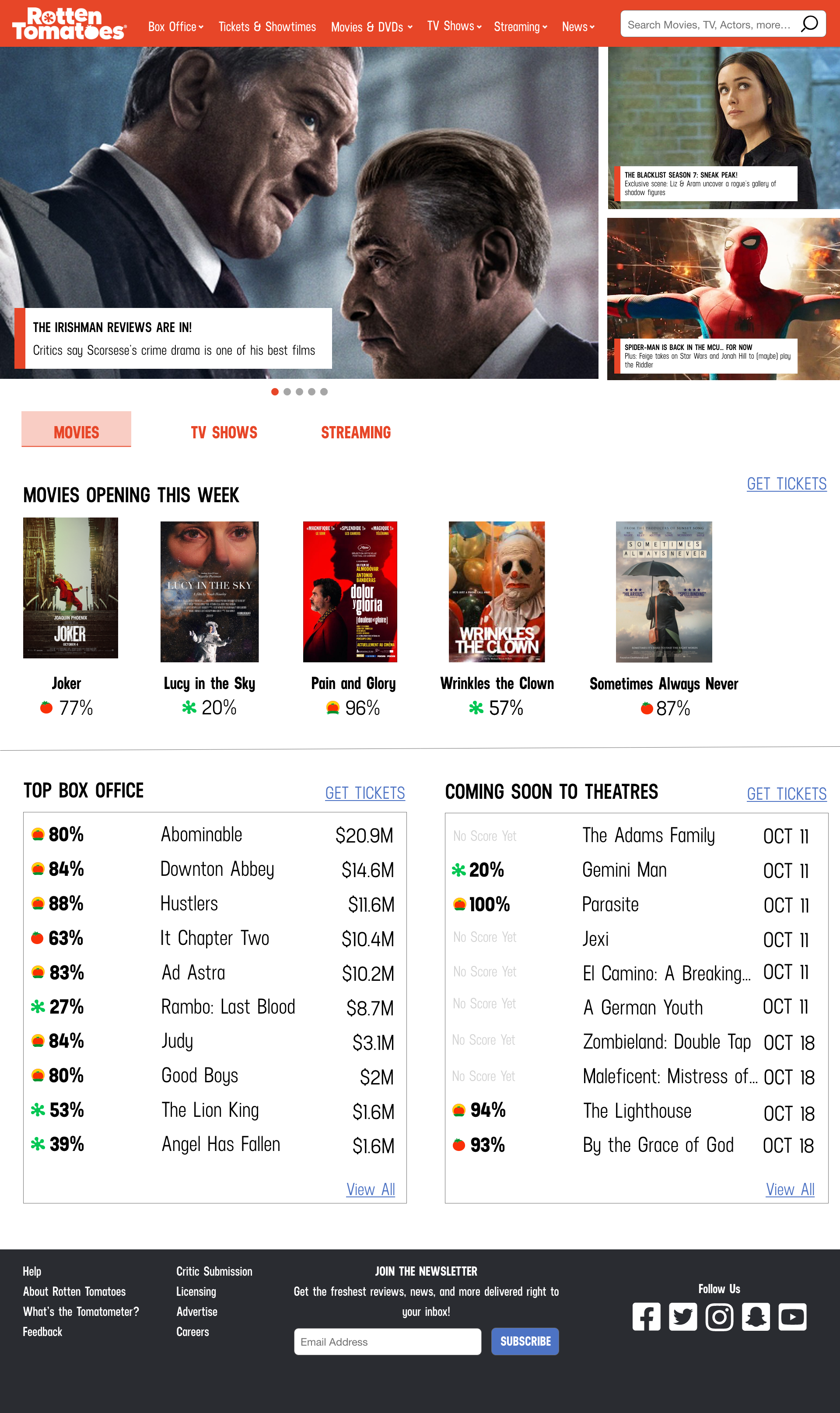
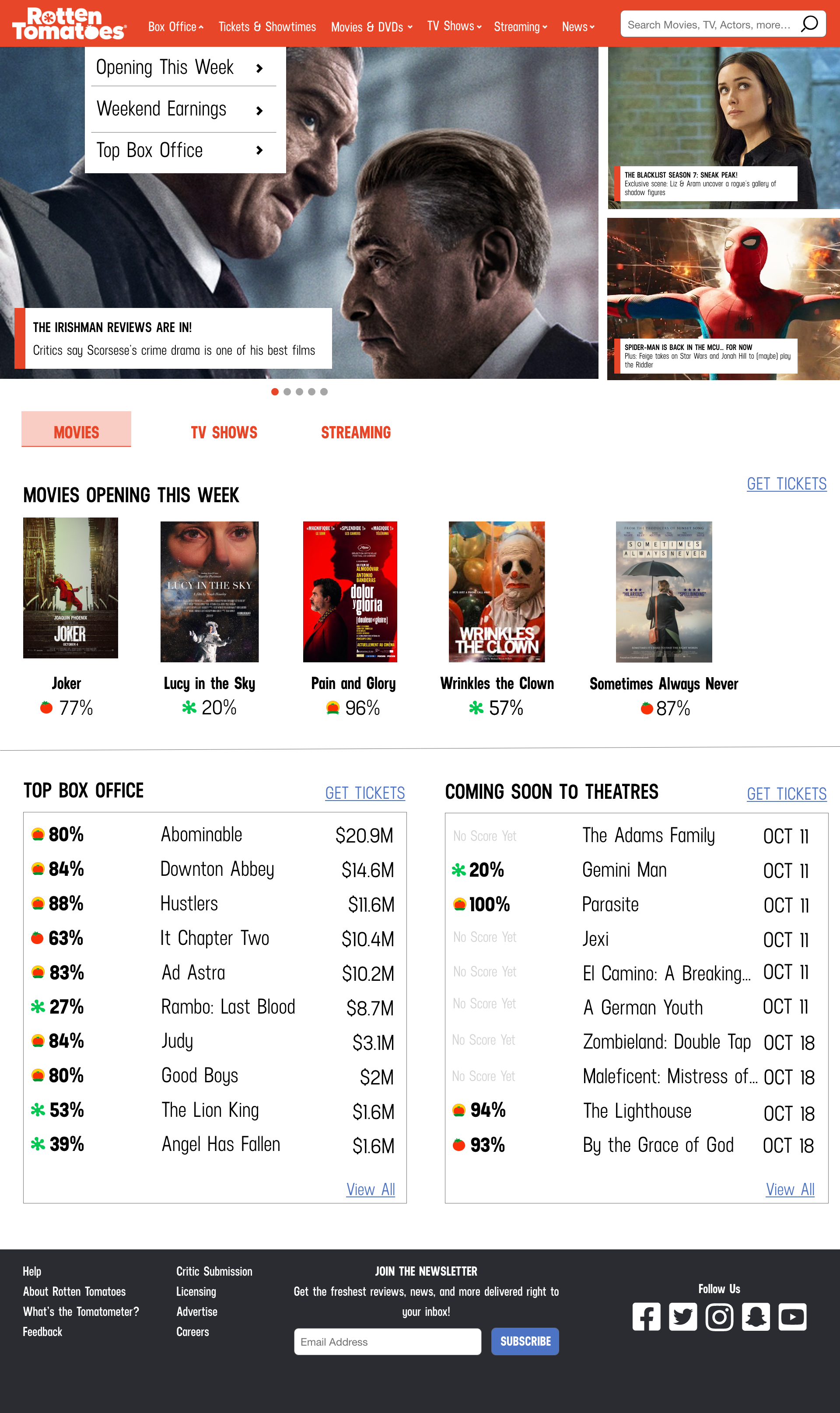
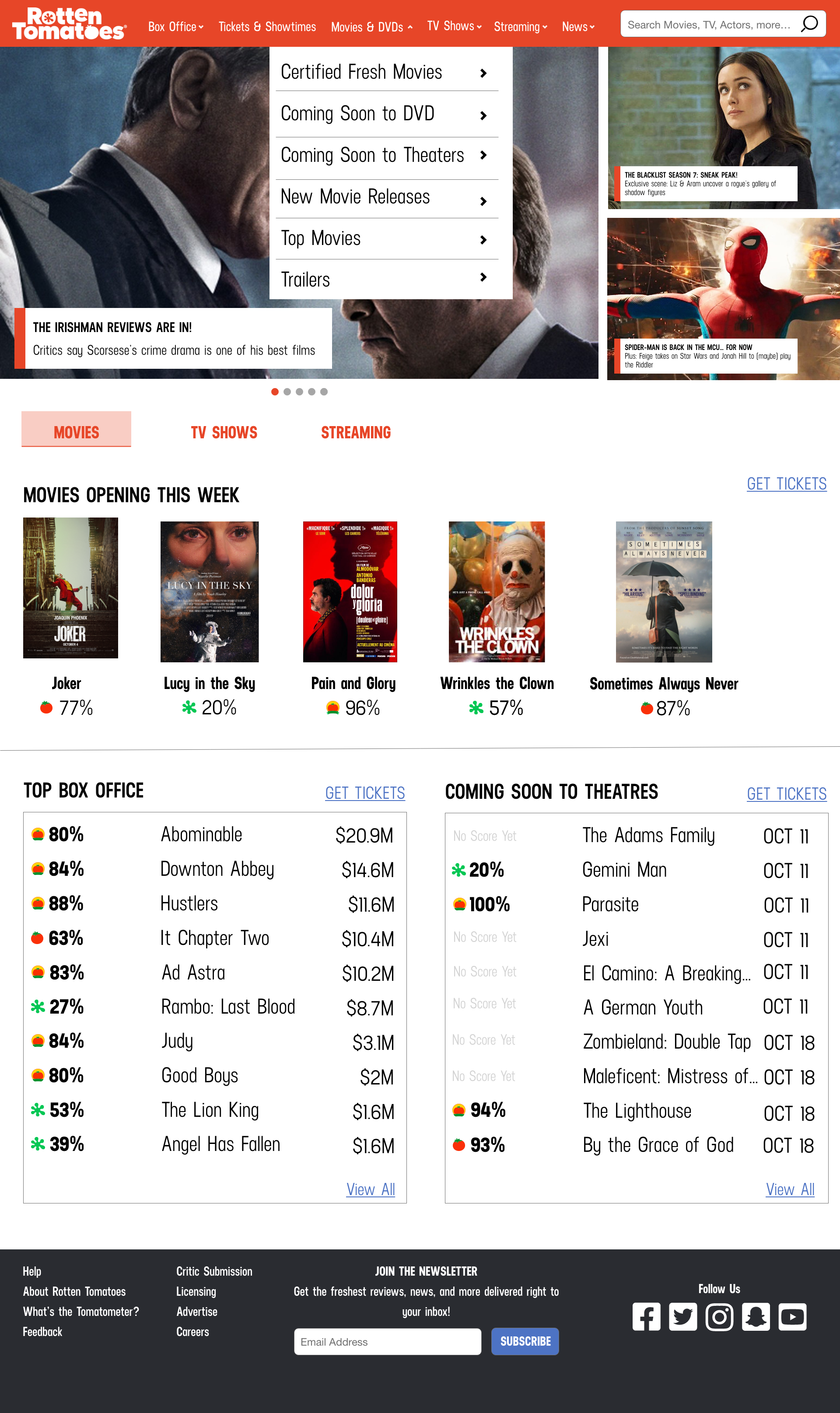
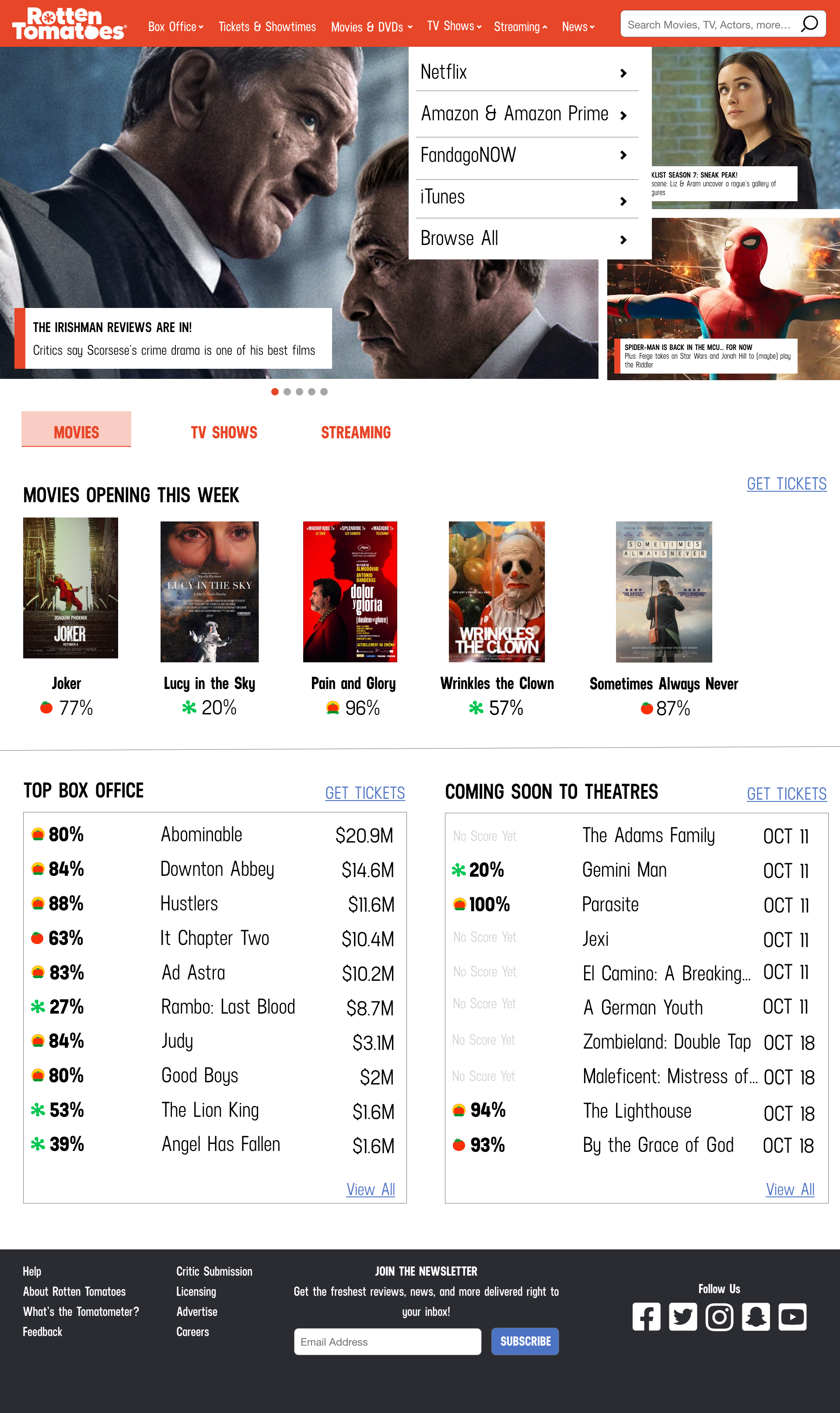

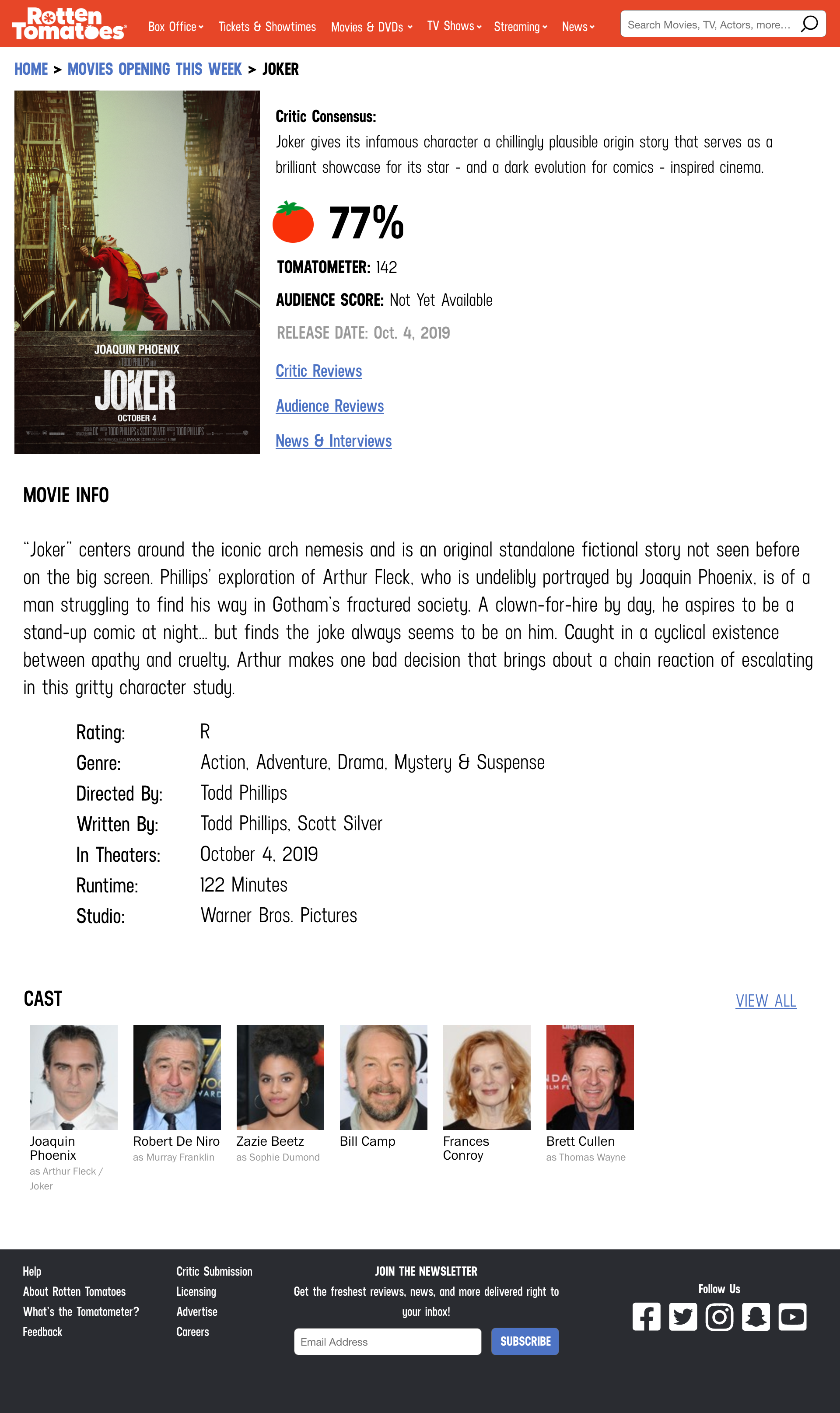
Project Details
Research & Analysis
I began conducting user interviews and usability testing with frequent Rotten Tomatoes users. I also performed a heuristic evaluation of the site to identify areas of friction and misalignment with UX best practices.
Key Findings
1. Frustrating Navigation:
- Users struggled to find specific movie content quickly.
- The site's architecture felt disorganized and repetitive.
2. Overwhelming Content Layout:
- Users reported cognitive overload from the homepage.
- Ads, trending lists, and reviews competed for attention, making it hard to focus on their original intent (e.g., checking a movie's score or review).
Design Opportunities
With these insights, I focused by redesign on two core areas:
1. Simplified Navigation
- A cleaner top-level navigation bar with fewer categories
- Search prioritization and movie page shortcuts
2. Content Prioritization
- Better visual hierarchy to guide users through primary content
- Modular layout that reduced information density and emphasized user goals (e.g., viewing a score, reading a critic's review, or watching a trailer)
My Role
This was an independent project conducted for my UX Design Master's program. I was responsible for:
- Conducting all user interviews and usability test
- Performing a competitive audit and heuristic evaluation
- Designing and iterating low- to high-fidelity prototypes
- Presenting the final redesign and process to peers and faculty
Final Design Highlights
- Streamlined homepage with collapsible sections and better grouping trending content
- Sticky navigation bar with easy access to search movies, TV and saved items
- Redesigned movie pages with a cleaner score layout, tabbed critic/audience reviews, and fewer distractions
- Responsive design optimized for both desktop and mobile use
Impact and Reflections
The redesign was well-received during academic critique sessions, with positive feedback on the clarity of layout, improved user flow, and evidence-based decisions. This project deepened my understanding of how design can reduce cognitive load and help users focus on their goals - even in content-heavy environments.

